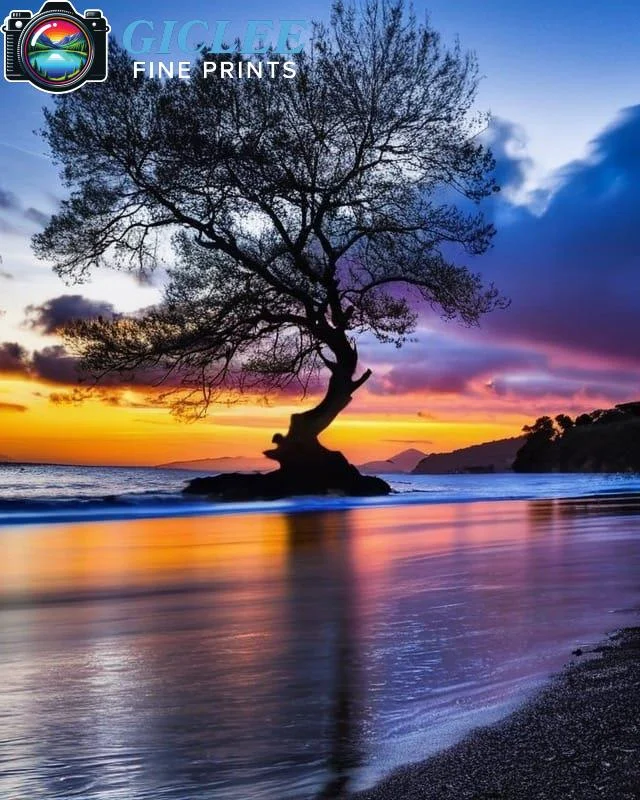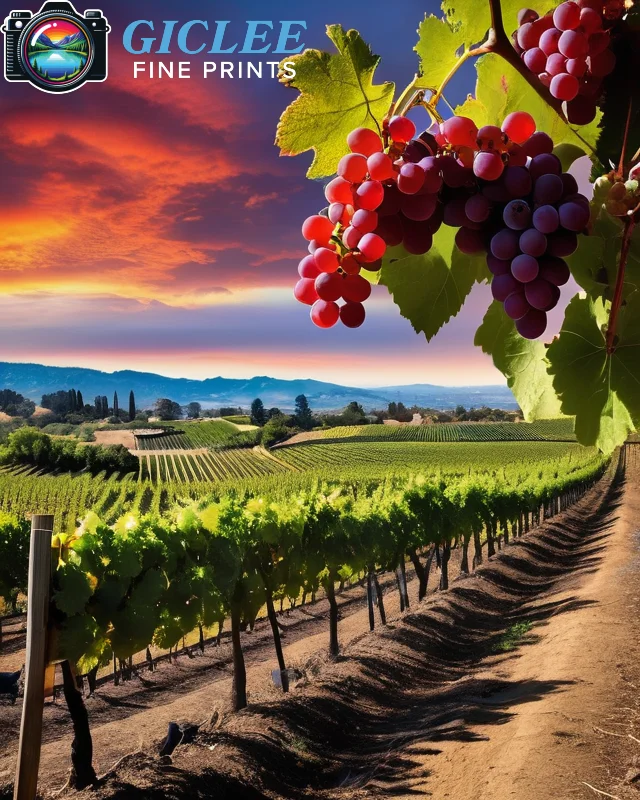
When it comes to displaying canvas, fine art paper, or metal prints, the size and style of the border can significantly enhance the overall aesthetic of your artwork. Whether you’re opting for a gallery-wrapped canvas or framing your prints on fine art paper, selecting the right border size is key to presenting your prints in a professional, polished manner. At Giclee Fine Prints, we help artists and photographers create stunning art prints with expert advice on choosing the ideal border size for any print style.
Understanding the Purpose of Borders
Borders, also known as margins, serve both functional and aesthetic purposes when printing and framing artwork. The right border can frame your artwork, create balance, and draw attention to key elements within the print. Whether you’re printing on canvas, fine art paper, or metal, understanding how to use borders effectively is essential for achieving a professional look.
Key Benefits of Borders:
- Framing Assistance: Borders provide a space for framing without covering any part of the artwork. This is particularly important for fine art paper prints that will be framed behind glass.
- Visual Balance: A well-sized border adds visual breathing space around the artwork, allowing viewers to focus on the central image without distraction.
- Protection: Borders help protect the edges of your canvas or paper print from damage during handling or framing.
Common Border Sizes for Canvas, Fine Art Paper, and Metal Prints
Different materials and framing styles require different border sizes. Here’s a breakdown of common border sizes for each print type:
Canvas Prints:
- No Border (Gallery-Wrapped): In a gallery-wrapped canvas, the artwork is stretched over the edges of the canvas, so no additional border is needed. This creates a clean, modern look.
- 2 to 3-Inch Borders: If you plan to frame your canvas print without stretching it, a border of 2 to 3 inches is recommended to ensure the frame doesn’t cover any part of the artwork.
Fine Art Paper Prints:
- Standard Border (1 to 2 Inches): A 1 to 2-inch border is commonly used for fine art paper prints, providing enough space for framing and matting. This size works well for medium to large prints.
- Wide Border (3 Inches or More): For larger fine artworks or high-end prints, a wide border of 3 inches or more adds elegance and allows the artwork to stand out in a frame. This is often used for giclee prints in gallery settings.
Metal Prints:
- No Border Needed: Metal prints are typically displayed without borders, as their sleek, frameless look is one of their defining features. However, a small white or colored border can be added for a framed metal print.

Choosing the Right Border Based on Artwork Style
The style of your artwork should play a role in determining the ideal border size. Different genres and types of art benefit from varying border sizes, depending on the level of detail, color, and composition.
Bold and Abstract Art:
- Minimal Borders: For bold, colorful pieces, smaller borders (or no borders at all) can create a dynamic, edge-to-edge display that emphasizes the energy of the artwork. This works particularly well for canvas prints.
- Gallery-Wrapped Option: For abstract art, a gallery-wrapped canvas with no visible border often looks best, as it allows the colors and shapes to extend over the edges of the canvas.
Detailed or Minimalist Art:
- Wide Borders: For more intricate artwork or minimalist designs, wider borders (2 to 3 inches) create balance and give the artwork space to breathe. This is particularly important for fine art paper prints, where borders help enhance the delicate details.
Photography:
- Standard Borders: For photography prints, especially giclee prints on fine art paper, a standard 1 to 2-inch border is ideal for framing. It provides enough space for matting and ensures that none of the photo’s details are lost in the frame.
Matting Considerations for Fine Art Paper Prints
If you plan to frame your fine art paper prints, adding a mat can enhance the overall presentation. Mats provide additional space between the artwork and the frame, giving the print a professional finish. The border size of your print should account for the matting.
Matting Tips:
- Add 2 to 4 Inches: When using a mat, add 2 to 4 inches to the border of your print. This ensures that the artwork is well-positioned within the frame and doesn’t feel cramped.
- Color and Style: Neutral-colored mats (white, off-white, or black) are popular choices, as they complement the artwork without distracting from it.

Framing Without a Border: Floating Frames for Canvas
If you prefer a borderless look but still want the benefits of a frame, a floating frame can provide the perfect solution. Floating frames are designed to give the illusion that the canvas is floating within the frame, creating a sleek, modern presentation without adding a visible border.
Key Benefits:
- Contemporary Look: Floating frames add a modern touch while allowing the artwork to take center stage.
- No Edge Coverage: Unlike traditional framing, floating frames don’t cover the edges of the canvas, allowing for a frameless yet framed aesthetic.
Special Considerations for Custom Prints
If you’re producing custom prints for a specific project or client, it’s important to consider the display environment and framing preferences when choosing the border size.
Custom Sizing for Unique Spaces:
- For unique spaces, such as businesses or galleries, you may need to customize the border size based on the dimensions of the display area. Larger prints often benefit from wider borders to create a grander presence on the wall.
Personalized Art for Clients:
- If you’re creating personalized artwork for clients, consider their framing preferences and offer guidance on the best border size for their chosen display style.
Contact Us
Our address is: 3816 Pioneer Trail Ste #3, South Lake Tahoe, CA 96150
Email: Info@gicleefineprints.com
FAQs
A 1 to 2-inch border is standard for most fine art paper prints, while larger prints may benefit from a 3-inch or wider border.
Metal prints typically don’t require a border, as they are often displayed frameless. However, a small border can be added for framed metal prints.
Yes, a floating frame is a great option for framing canvas prints without covering the edges of the artwork, offering a sleek, modern presentation.


